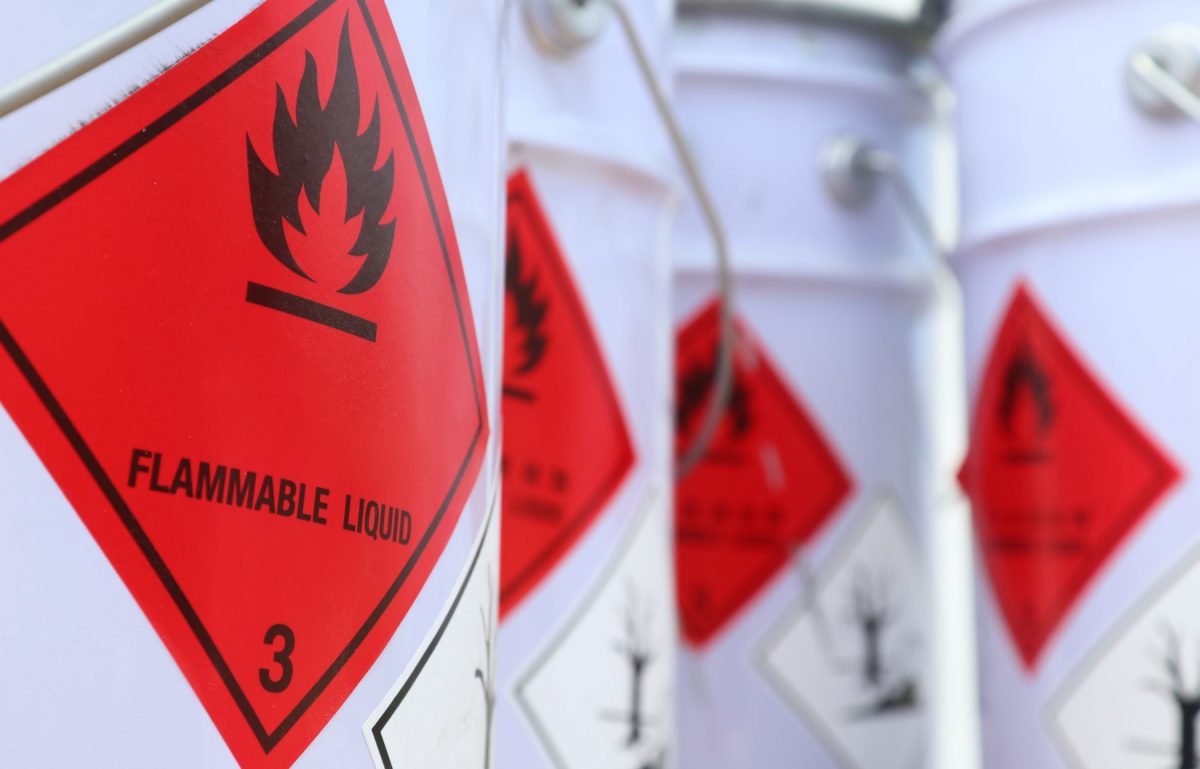Many industries store flammable liquids due to their widespread use in various operations, ranging from fueling machinery and vehicles to acting as solvents or reactants in chemical processes. For eco-conscious business owners, proper storage of these substances not only minimizes the risk of hazardous spills that could harm the environment but also aligns with sustainable business practices and regulatory compliance.
One crucial aspect of ensuring safety when dealing with flammable liquids involves controlling potential ignition sources, such as open flames and sparks from equipment. Use these tips for controlling ignition sources near flammable liquids.
Correct Storage of Flammable Liquids
Appropriate storage methods and containers can dramatically reduce the risk of accidental ignition. Understanding hazard classification for flammable liquids is fundamental for choosing the proper storage containers.
The liquid’s hazard class is useful for determining the material, design, and safety features of the containers used. Containers should be made of materials that can withstand the substance’s properties. For example, metal drums may be suitable for some liquids, while high-density polyethylene is ideal for others.
Make sure you consult the material safety data sheet (SDS) for the flammable liquid in question to determine the most suitable container. This invaluable resource provides detailed information about the physical and chemical properties of the substance, potential hazards, safe handling and storage procedures, and emergency response measures.
Proper Ventilation
The buildup of hazardous fumes can lead to an accidental ignition, resulting in fires, explosions, or leaks that can pollute the air, soil, and water sources. Ventilation can disperse flammable vapors and reduce the risk of ignition. Here are some suggestions for improving ventilation:
- Ensure adequate air circulation: Make sure that there are enough air inlets and outlets in the area where flammable liquids are stored and handled, allowing for sufficient air circulation.
- Use ventilation equipment: Installing fans, blowers, or other devices can help enhance the air movement in the area, quickly dispersing any flammable vapors that may accumulate.
- Regularly check air quality: Monitoring air quality ensures that the ventilation system is functioning correctly.
Regular Equipment Inspection and Maintenance
Faulty equipment can increase the risk of incidents, which is why inspections and maintenance are critical for controlling ignition sources near flammable liquids. Faulty machinery can generate heat or sparks due to friction, electrical shorts, or chemical reactions, any of which can ignite the vapors from the liquids. Moreover, equipment malfunctions may lead to leaks or spills of flammable liquids, increasing the likelihood of an accidental ignition if these substances come into contact with other ignition sources.
When inspecting equipment, pay particular attention to electrical connections, cords, and switches, as defects in these components can produce sparks or heat, which may ignite flammable vapors. Additionally, keep mechanical equipment properly lubricated to minimize friction-generated sparks or heat.
The proper management of flammable liquids is not only imperative for safety but also a crucial element of sustainable business practices. By storing flammable liquids correctly, ensuring adequate ventilation, and keeping equipment in safe working order, businesses can significantly mitigate environmental risks associated with these substances. Every step taken to prevent accidental spills or fires safeguards workers, business assets, and the environment.













